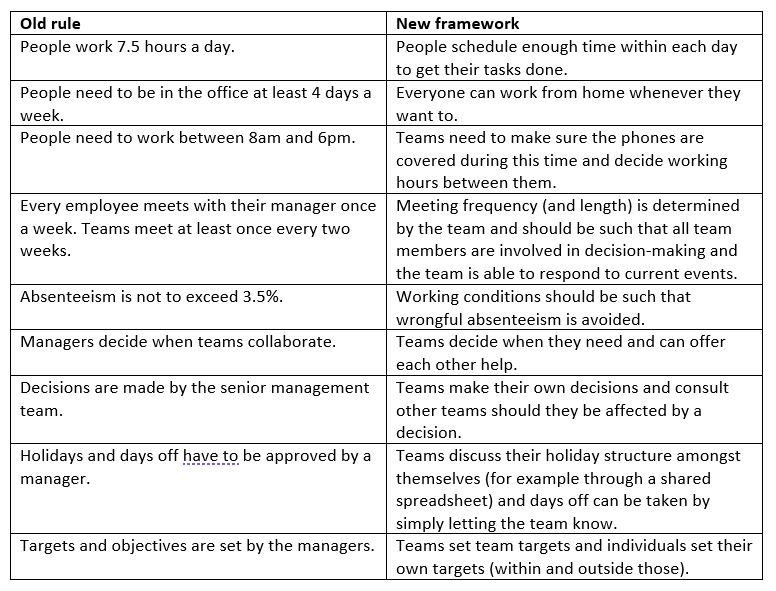Distributed leadership case study: the client
The client for this case study was a creative agency with 50 employees.

Distributed leadership case study: the diagnosis
The company struggled with a high turnover (30% compared to their industry average of 22%), stressed management and demotivated, unproductive, disengaged employees.
Managers constantly complained about people being off sick, not showing up on time and not taking ownership of their work. They tried setting up more meetings to keep employees on track, and provide more support and guidance how to get things done.
The company offered flexible working, where senior managers could work from home a number of days a week and could allow middle management and other staff to work from home once a week. Working hours were between 8am and 6pm to give flexible start and finish times to staff. Everyone was expected to be in the office for 8.5 hours Monday to Friday, with an hour lunch break to be taken ideally between 12 and 2pm.
Most managers were very protective over their teams, controlling the time they could allocate to meet with and help people from other teams. A lot of knowledge and expertise was siloed within specific teams and people. So, when certain people left, they took that vital knowledge with them.
Senior management had control over all decisions creating a bottleneck. This meant a lot of projects got delayed and people got frustrated because they could not reach their targets, set by senior management.

Distributed leadership case study: the solution
We started having conversations with everyone in the company to understand how people felt about working there. It was difficult to extract the truth as people were scared there will be repercussions from their managers, but some people really gave a good insight of the above diagnosis. This included frontline staff and managers on all levels as well as the Managing Director.
Once we knew about the barriers of working to their best abilities, we set up more conversations involving the whole company. Each point was discussed asking prompting questions and a framework was built from this.
Instead of rules that were barriers to people doing their best work, they could now make their own decisions within this guiding framework:

Managers are not responsible for their team and individuals anymore; teams are responsible and accountable for their work. Teams set their own targets and are responsible and accountable to achieve them.
The manager’s role is now to support and advise their team when approached, and to not interfere with any decisions the team makes.
Each team makes their own decisions about the ways they work, with everyone’s involvement, bringing out the best in people and guaranteeing good quality work.

Distributed leadership case study: the result
Managers are less stressed, and people now enjoy working for this company. Some people left as they were not able to work within the new guidelines. They were supported by management to find new positions elsewhere. Not all of them needed to be replaced as some of their responsibilities either fell away or could be distributed amongst other team members.
Their turnover rate eventually dropped below 15%, half of what it was before. That is also 7% below their average industry turnover rate.
Sick days have dropped from 2.2 to 1.02 days per person per year.
Their client net promoter score went from 55/100 to 81/100.
Within the first year, their revenue increased by 31% and profitability by 55%.

1 thought on “Distributed leadership in practice”
Pingback: What makes a good leader? Power dynamics at work. - KiKa Training